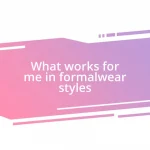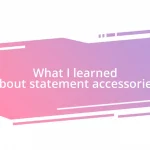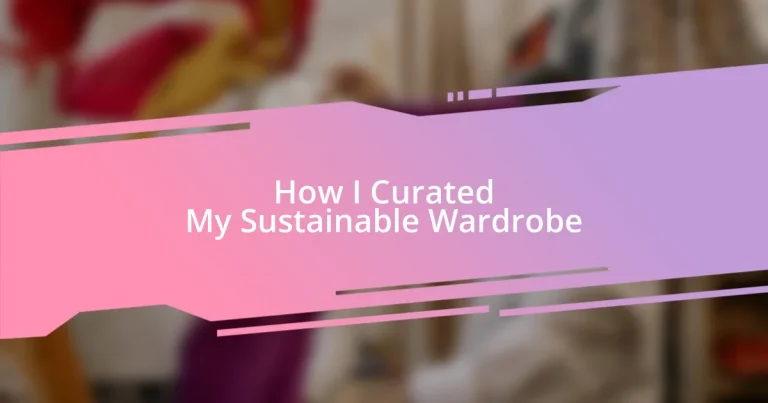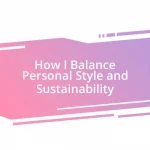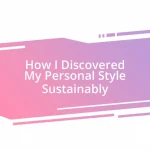Key takeaways:
- The shift towards sustainable fashion emphasizes the importance of minimalist wardrobes, ethical practices, and emotional connections to clothing.
- Curating a wardrobe involves assessing personal style, prioritizing versatile, sustainable pieces, and being mindful of materials and their impacts.
- Incorporating second-hand and vintage items promotes creativity and individuality while fostering a sustainable shopping mindset focused on quality and intention.
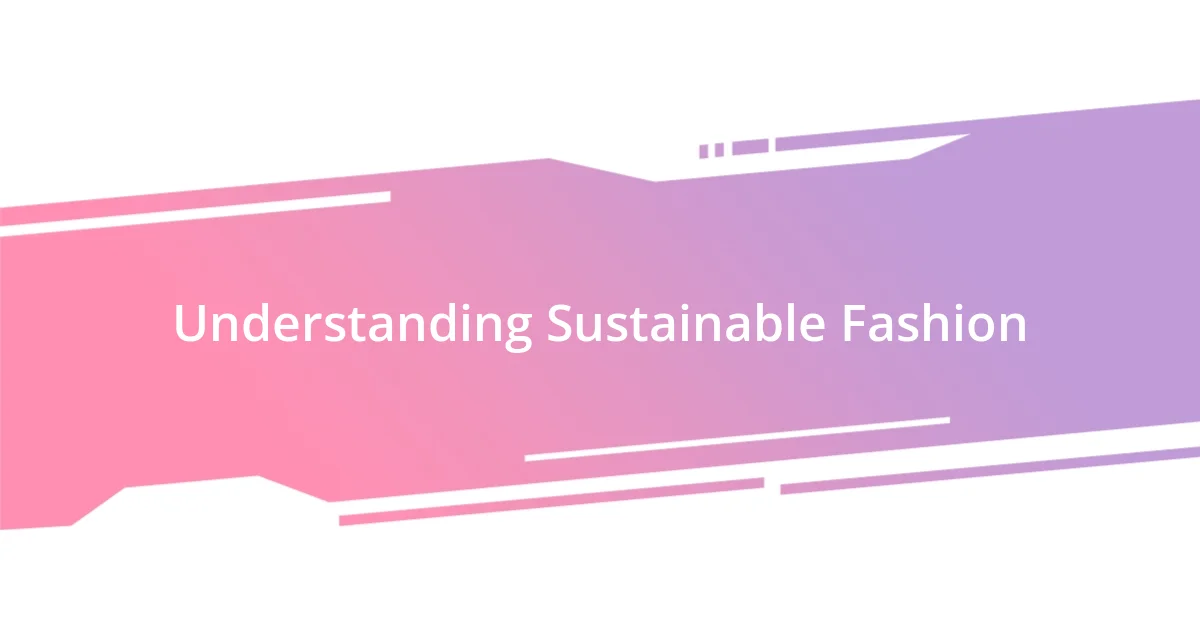
Understanding Sustainable Fashion Trends
Sustainable fashion trends are not just about eco-friendly fabrics; they represent a shift in our relationship with clothing. I remember the first time I truly understood this at a local thrift store, surrounded by clothes with stories. Each piece I picked up carried a history, making me question how much we value the new versus the nostalgia of the used.
As I delved deeper into sustainable fashion, I began to notice the emphasis on minimalist wardrobes and timeless styles. It’s incredible how a simple white shirt can reinvent itself in various outfits, reducing the impulse to constantly shop. Have you ever stood in front of your closet and felt overwhelmed by options? I have, and it drove home the idea that curating a thoughtful collection can create both clarity and creativity in what you wear.
Moreover, the rising popularity of brands focused on ethical practices opened my eyes to the human aspect of fashion. Each time I choose to support fair-trade companies, I feel a sense of empowerment. How amazing is it to know that our purchasing decisions can contribute to better wages and working conditions for artisans? That connection transforms shopping from a mindless activity into an impactful choice.
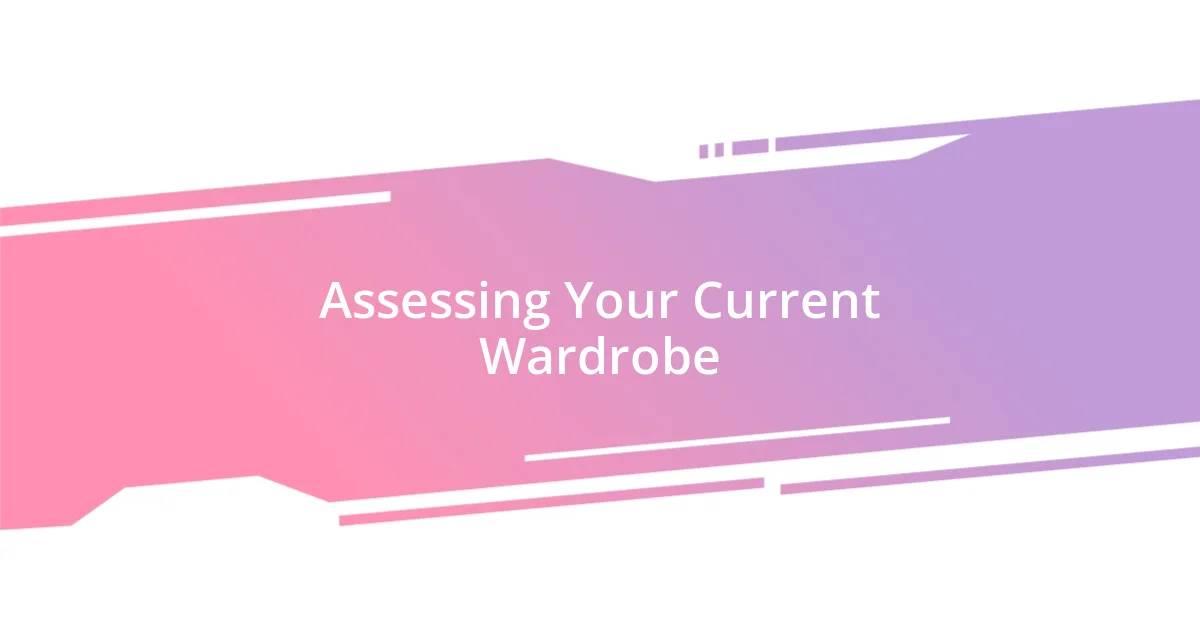
Assessing Your Current Wardrobe
When I decided to overhaul my wardrobe, I started by pulling everything out and really taking stock. It was eye-opening, like rediscovering old friends buried in the back of my closet. I realized I had pieces I’d worn only once or twice, while my favorites kept circling back into my daily outfits. This helped me understand not just my style preferences, but what I truly valued in my clothing.
To make your assessment more effective, consider these questions:
– How often do you wear each item?
– Does it fit well and complement your existing wardrobe?
– Is it made from sustainable materials or produced ethically?
– How does each piece make you feel when you put it on?
– Are there duplicates or similar styles that could be streamlined?
Of course, it’s not merely about numbers; it’s also about emotional connections. Holding onto a dress from my grandmother was tougher than I expected. But, letting go of pieces that didn’t resonate with my current self felt liberating. I learned that each item in my wardrobe should not only serve a purpose but actively reflect who I am today.
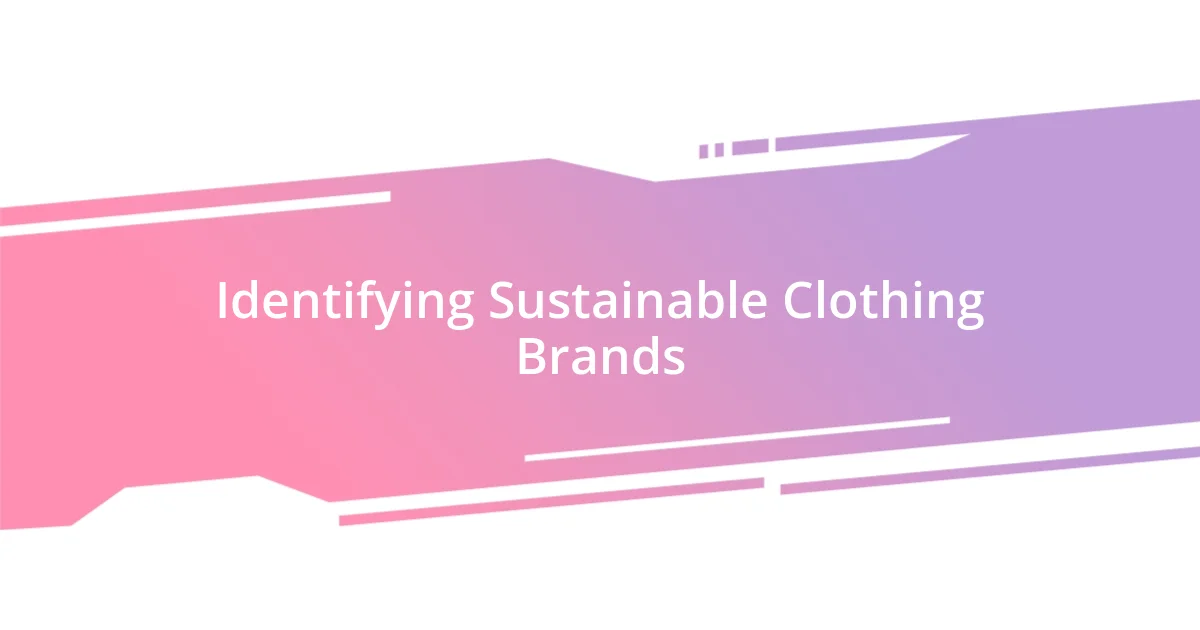
Identifying Essential Sustainable Pieces
Identifying essential sustainable pieces involves a blend of careful selection and personal storytelling. I’ve found that focusing on versatile staples has transformed my wardrobe into a cohesive collection. For example, a sturdy pair of sustainably-made jeans can transition from casual outings to more polished events just by switching up accessories. Doesn’t it feel great to have pieces that can do double duty?
I also realized the importance of knowing the materials behind my clothes. It was a lightbulb moment when I discovered organic cotton—so soft and eco-friendly! I made an effort to educate myself about different fabrics and actively sought brands transparent about their sourcing practices. This knowledge not only shaped my shopping habits but also infused a sense of pride when I wear these sustainable items.
Lastly, consider the emotional impact of your clothing choices. I remember shopping for a cozy cardigan made from recycled materials; every time I wrapped it around me, I felt warmth not just from the fabric, but from knowing it had a lesser environmental footprint. It’s fascinating how our wardrobe can embody values that resonate with our personal ethos, isn’t it?
| Essential Piece | Key Features |
|---|---|
| Organic Cotton T-Shirt | Soft, breathable, and biodegradable; a versatile layering piece. |
| Recycled Denim Jeans | Durable and stylish; reduces waste while providing comfort. |
| Timeless Cardigan | Warm and cozy; made from eco-friendly materials and perfect for any season. |
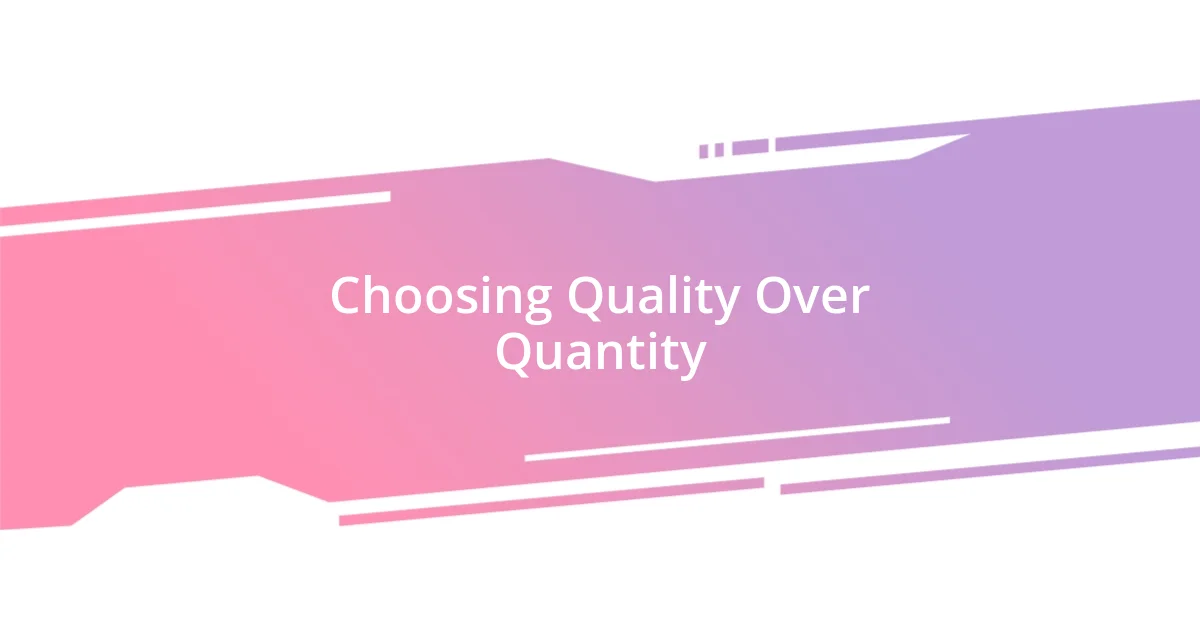
Choosing Sustainable Fabric Options
Choosing the right sustainable fabrics has truly been a journey for me. When I stumbled upon linen, it was like finding a hidden gem in the fabric world. It’s not only made from flax, which requires less water compared to cotton, but the texture is crisp and fresh. I remember wearing my first linen shirt on a hot day; the breathability kept me comfortable, and I felt proud to support a fabric that was kinder to the planet. Who knew that what I wore could align so closely with my values?
I’ve also discovered the beauty of Tencel, a fabric derived from sustainably sourced wood pulp. It’s incredibly soft and drapes like a dream! One afternoon, I tried on a Tencel dress and felt its gentle touch against my skin. In that moment, I realized that sustainable choices could also indulge my senses. I often ask myself, how does this fabric enrich my experience while also benefiting the environment? It’s a question that has changed the way I shop.
Moreover, I’ve come to appreciate recycled fabrics, like those made from plastic bottles. It struck me as remarkable that an item I might have discarded could be transformed into something beautiful and functional. I once wore a jacket made from these materials to a gathering, and I couldn’t help but share its story with friends. Their intrigued expressions made me wonder, doesn’t it inspire others to make mindful choices as well? Each piece in my wardrobe now serves as a conversation starter, encouraging a ripple effect of awareness about sustainable living.
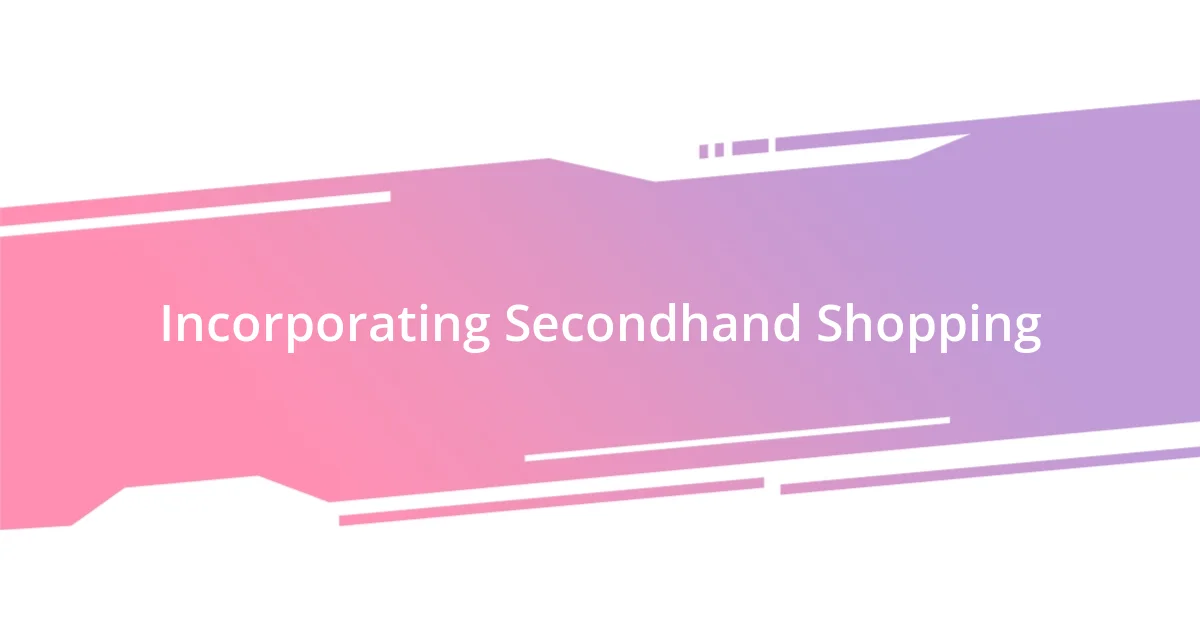
Incorporating Second-Hand and Vintage
Incorporating second-hand and vintage pieces into my wardrobe has not only reduced my environmental impact but also allowed me to uncover unique treasures. I still recall the thrill of finding a vintage leather jacket at a local thrift store; it felt like a slice of history, and I wondered about the stories it could tell. Every time I wear it, I feel a connection to its past, and that’s something special that new clothing often lacks.
Exploring the world of second-hand fashion opens doors to creativity and personalization. I once stumbled upon a charming floral dress from the 70s that didn’t fit perfectly. Rather than dismissing it, I decided to make it my project. After a simple alteration, the dress became a staple in my summer wardrobe. Isn’t it amazing how a little effort can turn something pre-loved into a cherished favorite?
With vintage and second-hand finds, I’ve been able to consciously curate my wardrobe while also indulging my love for fashion. I often ask myself, how does each piece reflect my style and values? By seeking out unique items, I create a wardrobe that tells my story—one that is diverse, rich, and, above all, sustainable. Don’t you think it feels wonderful to wear clothing that perfectly resonates with who you are?
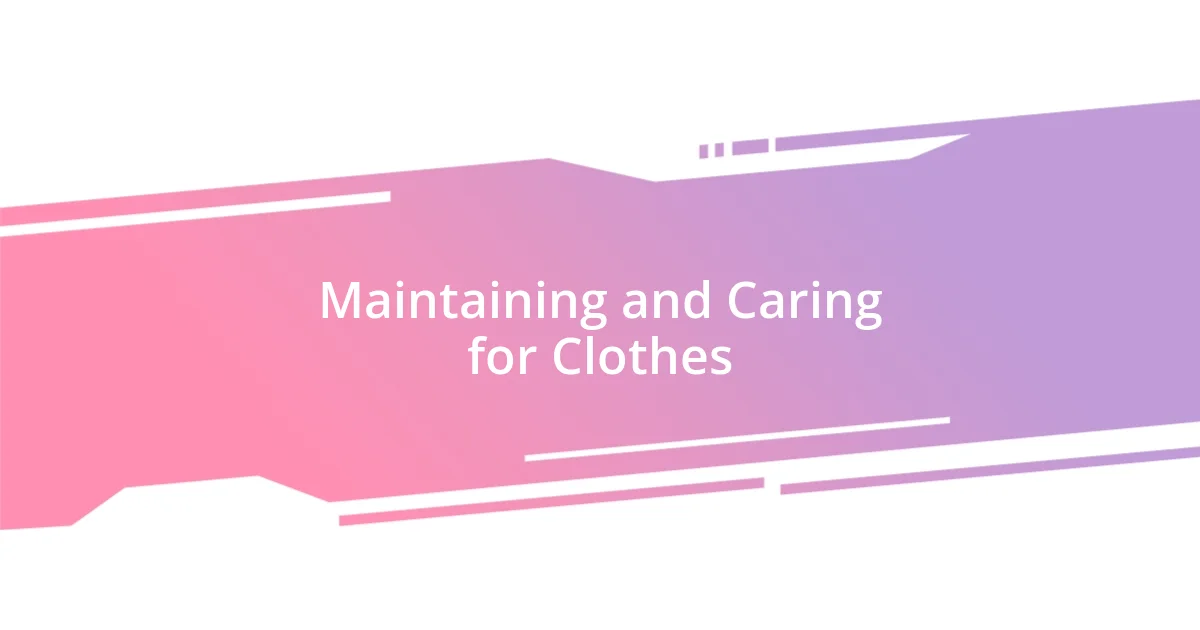
Building a Sustainable Shopping Mindset
Building a sustainable shopping mindset starts with asking the right questions about our purchasing habits. I remember standing in front of a clothing rack, holding a trendy top that caught my eye. Instead of simply buying it, I paused and asked myself: “How long will I truly wear this? Is it made to last?” This moment of reflection ultimately led me to understand that my clothing should be an investment— not just another impulse purchase.
Learning to differentiate between necessity and desire was another enlightening step in my journey. I distinctly recall an online sale that seemed too good to pass up. Instead of adding items to my cart, I created a list of what I genuinely needed. I realized the allure of sales often clouded my judgment, making me forget that sustainable fashion means making choices aligned with my values and lifestyle. Checking that list was a refreshing reminder of my commitment to sustainability.
As I continue to refine my shopping approach, I find myself gravitating toward brands that prioritize ethical practices. One day, I discovered a small, local label dedicated to fair-trade production. The moment I read their story, I felt a genuine connection; it was like joining a community that shares my values. I often ponder how every choice we make as consumers can lead to significant change. Don’t you think that each time we support ethical brands, we’re empowering not just ourselves, but countless artisans around the world?


